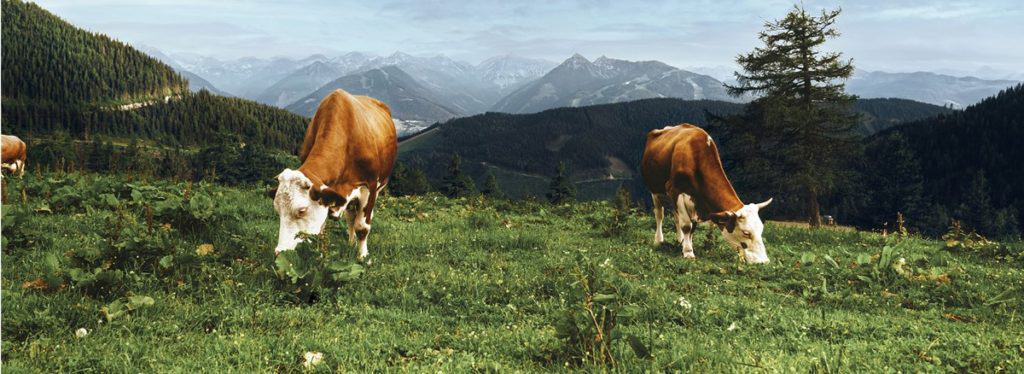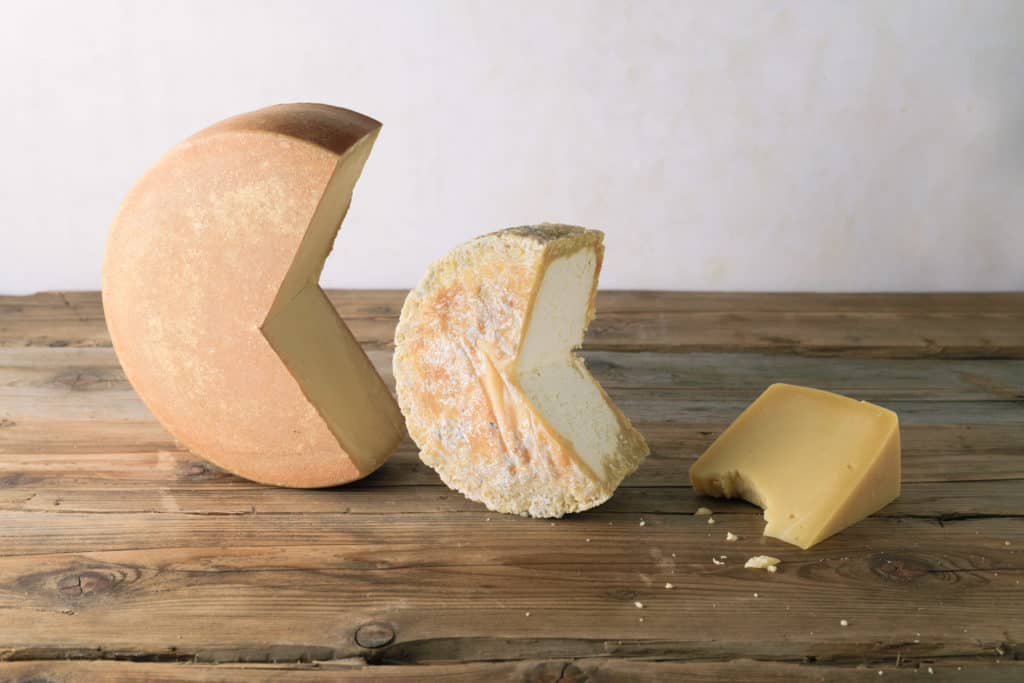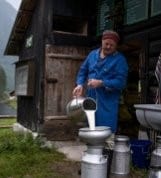
European Authenticity, Austrian Identity
From the high mountains that define Austria’s stunning landscape come some of Europe’s finest cheeses. Here, far away from urban life, natural, high-quality milk from small family farms is processed using protected production methods passed down through generations. In Austria, cheesemakers work in harmony with and respect for the environment and the animals, to produce natural, organic, GMO-free cheese. Regional identities, specificities of place, and time-honored traditions of cheesemaking work hand-in-hand to create a wide spectrum of cheeses, which are uniquely Austrian and authentically European.
Cheese is more than just a staple of the European diet—it is central to European identity. Cheese speaks of history; it traces centuries of heritage and know-how, passed down through generations to be preserved and improved. It speaks of place, as each cheese is the reflection of a distinctive climate and geography. It speaks of people, the dairymen and women who care for the land and the animals on their family farms day after day, and the attention and love these farmers and cheesemakers put into each block of cheese.
Austrian Cheese: Older Than Austria Itself

Cheesemaking in what is now Austria dates from the Stone Age when nomadic people created sour milk cheese. Quick and easy to make, it was nutritious, tasty, and practical for preserving milk. Later, the Romans brought to the region a new element of cheesemaking: fermentation. These cheeses were made with rennet and pressed into molds to last during the mountainous area’s long, hard winters. Caseus Alpinus, a cheese that was popular during the ninth century reign of Charlemagne, whose empire included present-day Austria, is believed to be the ancestor of today’s Austrian mountain cheeses.
Traditional Agriculture, High in the Mountains
Seventy percent of Austria is mountainous, and the unique flavors of Austria’s mountain cheeses come from the animals being grazed on the diverse flora of the alpine pastures. The average dairy farm, 90 percent of which are family owned, has just 22 cows. Farmers spend the summer months with their animals in the mountains, often accompanied by children and parents to share in the labor. Life on these high mountain pastures contrasts breathtaking beauty with relentlessly harsh conditions; the terrain requires much of the hard work to be done by hand.
The skills and dedication to dairy farming and cheesemaking, guided by knowledge and experience passed down over generations, is what we taste and enjoy in Austria’s alpine cheeses. The traditions behind these cheeses are worth preserving, not just because of the special quality and taste of the cheese, but because they are an irreplaceable cultural asset. Austrian mountain cheese is made in accordance with the standards set by the European Union, which guarantee the authenticity, quality, place, and technique of Austrian alpine cheeses.
GMO-Free and Committed to Nature

Besides good taste and healthy nutrition, Austrian cheese stands for responsibility. With the growing demand for organic foods, Austria has made sustainable agriculture its priority, and has spoken out against genetic engineering right from the start. The country spans an area of about 20.7 million acres, with agriculture occupying 6.9 million acres—all GMO-free. This extends to animal feed, milk, and other dairy products, including cheese Dairy cattle graze on the juicy grass of 8,000 mountain meadows in summer; the grass is also mowed and dried into hay to feed the herd in winter. Clean, pure water and strict health and hygienic standards also contribute to the exceptionally high level of environmental stewardship.
Three Styles of Austrian Cheese

There are about 450 cheeses made in Austria, which can be divided into three categories:
SOFT: The heritage of Austrian soft cheese dates back to the country’s many monasteries, where they are often still made. The range is vast and the flavors can be delicate and mild, or robust and tangy.
SEMI-HARD: This is the most common style of cheese in Austria. They are produced throughout the country and are often named to reflect the region. They can be strong or mild, smooth, or with eyes (holes).
HARD: Time and tradition distinguish the character and uniqueness of Austria’s hard cheeses, which are some of the country’s most revered and include the Alpine cheeses. Their flavors range from mild to intense.
Austria’s Famous Mountain Cheeses
“Bergkäse,” which translates to mountain cheese, is at the heart of Austrian culture. It includes, but is not limited to, the following examples:
VORARLBERG MOUNTAIN CHEESE: The abundant vegetation of the Vorarlberg Alps gives the milk and cheese produced here an exceptionally rich flavor. It is made from silo-free raw milk according to traditional methods and is known for a tangy taste developed over a ripening period of at least six months.
VORARLBERG ALPINE CHEESE: On Vorarlberg’s high Alps, fresh, raw milk is processed into cheese by hand. This hard cheese is characterized by alpine herbs, which give it rich aromatics and spice. It matures over a three-month ripening period.
TYROLEAN PASTURE AND ALPINE CHEESE: Produced on select Tyrolean pastures from an old recipe, this hard cheese is made exclusively from milk obtained during the high summer season. After a ripening period of at least four months, it is available from October through March and is characterized by its strong, sharp taste.
Taste Along
Still want to learn more about these incredible cheeses from Austria? Check out this recording from our Virtual Counter Culture event where we talk, taste, and break down all things Austrian cheese.








